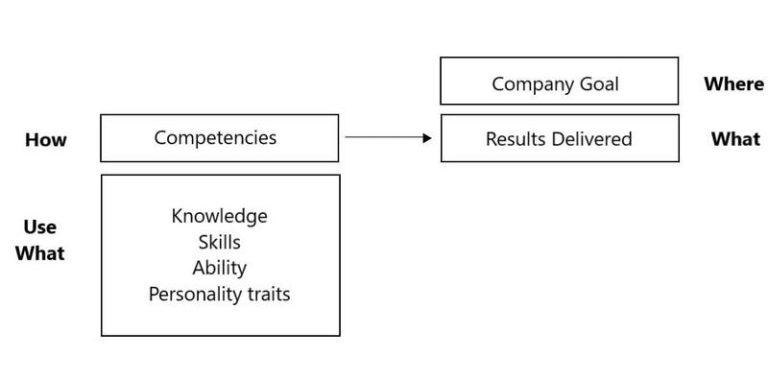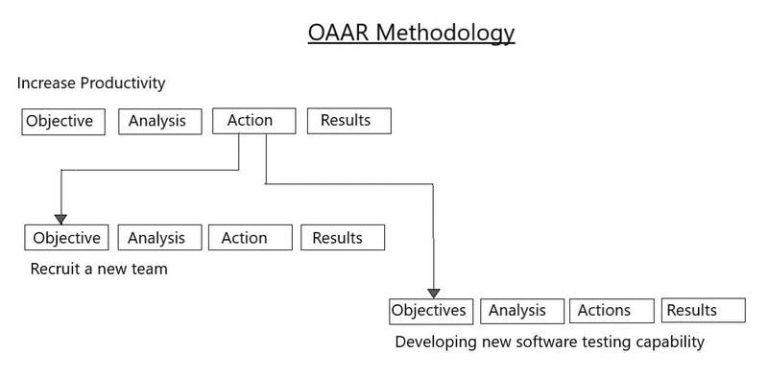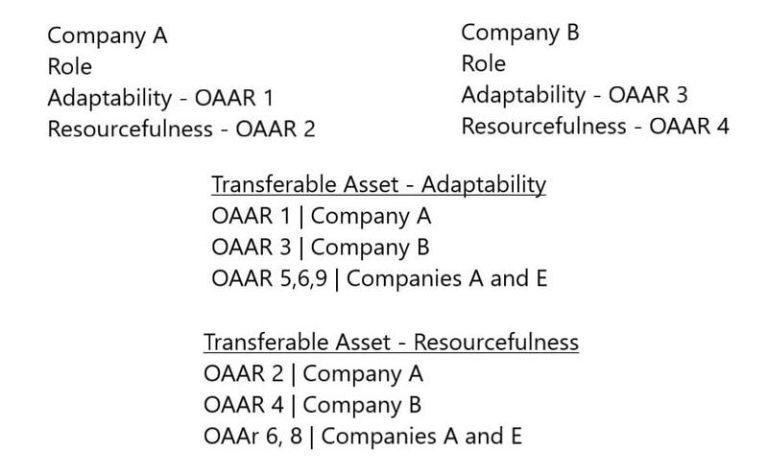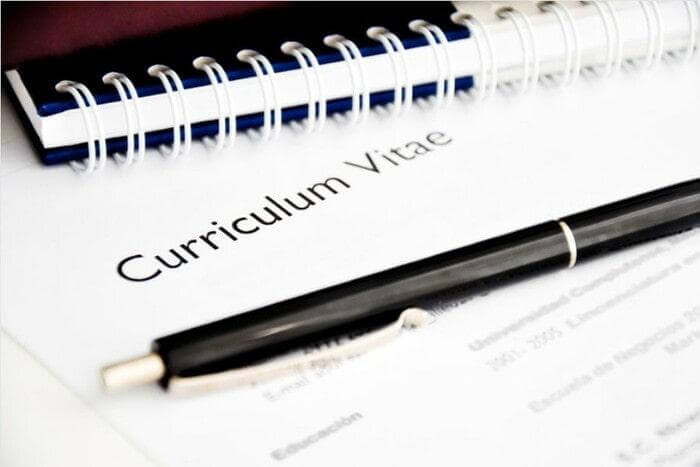Any resume is deemed to have failed its purpose if it doesn’t pass the two basic tests. First, to make it to the initial shortlisting of the prospective recruiter. Second, convince the recruiter, in less than 30 secs, to qualify for getting a personal interview call. Core Competencies in resume help you pass these tests.
The main purpose of loading core competencies on resume is to adequately equip it for making it through both the elimination stages in the recruitment process.
Given the fact that the proportion of candidates who apply for a particular job is humongous to the number of vacancies available the job market of today is the recruiters market.
The candidates cannot afford to miss out on adding even a single piece of information about themselves, otherwise relevant to the recruiters, on to their resumes in order to stay in the competition for the coveted jobs.
Identifying and adding the core competencies on resume is one of the crucial steps one need to properly understand and implement the right way.
Core Competencies Meaning
Generally, its easy to talk about incidents, qualities, and abilities of other’s than one’s own self. One would have never stopped, over the course of one’s career, and thought about what are the skills, abilities, and qualities one possesses which are helping one perform the tasks related to one’s job responsibilities so well.
The recruitment process of today makes it imperative on all to engage in this exercise from time to time, project to project, and hierarchy to hierarchy. Doing this is important if they want to stay market ready, even if not looking for a job change immediately.
Let us first begin by understanding the meaning of the term core competencies. An average employee, from any non HR department, is almost illiterate to the term and its significance all together.
A core competency is one’s behavioral trait which influences how one does and not what one does in a particular job. Common competencies examples for putting on a resume would be ability to negotiate, flexibility, resourcefulness, innovation etc.
Knowledge is passive information on any subject like medicine. Personality trait is a tendency to behave in a certain way, such as flexibility.
Having knowledge, skills and abilities are not enough for exhibiting particular competency. Competency is the trait which enables one use the associated knowledge, skills and abilities productively, or in the right way.
It is the level of applied behavior of a competency and not its mere presence pr absence that drives performance.

Core Competencies Nature
Core competencies are specific and behavioral in nature. Competencies are behavioral and measurable. You can further develop competencies or acquire newer competencies.
They are your transferable assets because you can demonstrate their use at the same level of complexity across multiple situations.
Core Competencies on resume are specific to a company and a role. Competencies can be business or technical in nature. Business competencies can further be split into threshold and performance competencies.
Threshold competencies are the behavioral traits you are expected to possess. For example integrity and trust, and demonstrate these irrespective of seniority and functions, and which do not differentiate performance.
Performance competencies, like customer focus, are those behaviors that distinguish excellent from average performance.
Technical competency on the other hand is the functional knowledge unique to of your are of work, like finance, or accounting.
Competencies can be singular in nature, like perseverance, or made up of more than one competencies. Envision is a core competency that encompasses visionary leadership and creating buy-in competencies within its ambit.
You must identify and pick up core competencies for your resume from the collection of competencies you have gathered over the entire course of your career.
Your collection of core competencies expands as you experience new roles, dynamics, cultures, events and tasks within the workplace and social environment.
Identify Core Competencies for Resume
Here, I will explain step by step the process of identifying core competencies for resume which I myself use while writing resumes for my clients through my resume writing services.
There are three cumulative steps which I use to identify core competencies for resume for my clients.
- Develop a list of possible core competencies, knowledge abilities and skills by deconstructing your career, project by project, task by task.
- Identify and evidence your competencies by looking for common groupings of competencies.
- Find your core competencies by looking for common use of evidenced competencies.
Step 1 – Deconstruct your career and develop list of possible competencies
In step one you need to deconstruct your entire career span into multiple competencies, knowledge, skills and abilities by revisiting all the projects and tasks you would have handled in various capacities.
You would be using the OAAR – objective, analysis, action, results – methodology for doing the same separately for each project.
OAAR Methodology
OAAR methodology aid help you in breaking down the seemingly complex elements of your past and present work. social, and education life into a simple yet concise story which will then be used and expanded upon in steps 2 and 3.
- Objective – sets out the task you had to deliver
- Analysis – throws light on your thinking and evaluation of the options you had to deliver the task
- Action – is how you executed the options you had chosen
- Results – are the outcomes of your actions
In order to better comprehend OAAR methodology which is the first step in helping you identify your core competencies for putting on the resume let us take an example of a senior executive from a software industry.
Her main objective was to increase productivity by X% by developing a process to increase quality control within 12 months.
At the analysis stage of her OAAR she considered the resources available vs needed for carrying out her objective. Out of the options available and generated she chose the option of building a new team.
The action point in her OAAR was to recruit and develop a new team. This action point became a new objective of recruiting and developing a new team.
The analysis phase of this sub OAAR ( which had branched out from the main OAAR) included the analysis of the functional specifications of the new department, job specifications, set-up, and running cost to resource allocation.
The action point of this sub OAAR was to recruit the team against agreed headcount and budget.
On the other hand, emerging parallel from the original analysis- action phase another sub – objective of creating a new software testing capability started another parallel sub-OAAR process.
In an effort to fulfill her original objective she was throughout involved in convincing the stakeholders, board and other departmental heads, of her plan in order to integrate the new department into the organization.
She also created parallel OAARs covering areas like identification and negotiation with the third party suppliers.

Peeling the layers and grouping
You need to peal back the layers, like of a Russian doll, and get under your skin. Breaking down a composite objective into its singular components takes time and practice. Each project must be broken down on a single sheet of paper.
Now begin grouping the activities, as undertaken by you, now broken down in parts, into action verbs, did you consult, facilitate, or liaise? design, develop, or implement?
Did you assist, manage, or lead? Change, clarify, compose, collaborate, contribute, construct or counsel? or decrease, direct, devise, or divest? Did you eliminate, enter, examine, or extract? and envision, engage, or execute?
Also, think of your past incidents other than related to your work where your relatives, friends or acquaintances have shared their perception of you related to certain incidents in terms of your skills, and abilities.
For example, some friend would have found you calm and resourceful under great-stress during some incident and have mentioned it to you. All these will add to your OAAR examples as a one big common pool.
Now, convert these active verbs into active statements, delivered X by doing Y achieving Z by time T. Make sure that your active statements are very specific and in active voice. Also, all the statements should be written in third person.
Next, look for common areas of strengths and weaknesses. What do I do well? And what don’t I do well? Things I need to keep doing? Activities I need to Stop doing? How do I do well? How do I do badly? what did I learn from a particular task or project.
Step 2 – Identify and evidence your Core Competencies for Resume
In the next step you can begin identifying and evidencing your core competencies for resume by grouping your OAARs based on how you used and combined your knowledge, skills and abilities to deliver the results.
The analysis and action part of your OAARs provide the clue to your behavior patterns and competencies. Because, these sections answer the question on how you do things with a clear and direct inference that you can do it again.
Begin identifying your competencies from analysis and action sections. From the example of the senior executive in a software industry who had chosen the action of recruiting a new team from her analysis, and which had become her sub-objective.
She indeed recruited and blended people into a team creating a shared purpose and the team was quickly accepted and integrated into the company.
The competency she exhibited from this action taken by her is of building effective teams which is evidenced, proved by the results she had achieved by executing the corresponding action.
From her main objective she can identify more competencies like ability to plan realistically, organize resources to deliver tasks, and review what needs to happen by when. This is how you can identify core competencies for putting on your resume.
You need to analyze, identify, evaluate, and define competencies and groups of competencies as each OAAR helps you understand your behavior, base traits, and motives.
The process of identifying your competencies also prepares you for the subsequent interview (as a part of hiring interview strategy) which the resume will get you. A lot of questions the interviewer asks are related to your competencies such as, ‘Have you lead a team during a crisis?
How did this compare with calmer times?’ or ‘ Tell me about a time you had to deal with a conflict?’
List of some Core Competencies for Resume
- Ability to deal with ambiguity
- Skill to negotiate
- Adaptability
- Innovation
- Courage
- Commercial awareness
- Resourcefulness
- Reduces Complexity
- Results driven
- Problem Solver
- Build relationships
- Abstract reasoning
- Verbal Reasoning
- Decision making
- Planning
- Motivating others
Step 3 – Turn Core Competencies for Resume into Transferable Assets
Your transferable assets are the competencies you have exhibited and proved (evidenced) over multiple projects or tasks in multiple companies and roles at the same level of complexity.
Level of behavior vary for a particular competency over multiple cumulative levels of complexity.
If you take adaptability, a core competency, as an example, it can be divided into five cumulative levels of complexity:
- 1 – recognizes the need to adapt
- 2 – Adapts to the situation
- 3 – Adapts to widely varied needs
- 4 – Adapting plans and goals
- 5 – Adapts organizational strategies
You have already done the comprehensive OAAR break down of your career. You have also identified a number of competencies that are evidenced (proved) by each OAAR.
Now your transferable asset would be that competency of yours which you have exhibited, and proved over multiple OAARs taken from a number of companies and roles at the same level of complexity.
You can begin by taking a aerial view off all your OAARs so that general patterns and trends related to your core competencies become obvious. Group the competencies you use frequently together.
These groups will represent the frequency at which you are using the same type of behavior or group of behaviors and therefore show your strengths.
These core competencies are your transferable assets that you have used successfully on several occasions. The complexity of your transferable assets is defined by the type of objectives you regularly deliver which are in turn decided by your level in the organizational hierarchy.
The OAARs which prove your competencies also evidence your transferable assets.
Lets assume you have worked for two companies, A and B. you created a number of OAARs and have identified two core competencies for resume, adaptability and resourcefulness, because you used them the most.
Core competency adaptability is evidenced OAAR 1 from company A and OAAR 3 from company B. Core competency resourcefulness is evidenced OAAR 2 from company A and OAAR 4 from company B.

Normally, a core competency must be evidenced, demonstrated successfully, over four to five OAARs to qualify as a Transferable asset.
Transferable Assets Benefits
Adding core competencies on resume as transferable assets help the prospective employer understand the depth and relevance of your experience.
Your transferable assets also affect the quality of your answers you will be giving during your interview.
You can explain your transferable assets using the OAAR methodology to structure your answer in a way that ensures that your objective was clear, thinking focused, the action necessary, and the result beneficial.
Additionally you can amply evidence your core competencies – transferable assets from the OAARs you have worked on.
If you follow these guidelines – 3 steps – to build your career core competency bank you should be able to come out with some 6 – 10 transferable assets, core competencies for resume, each must be evidence by at least 4 – 6 OAAR case studies.
Each transferable asset is supported with a wealth of information set out in a logical focused manner.
Other Informative Articles….

